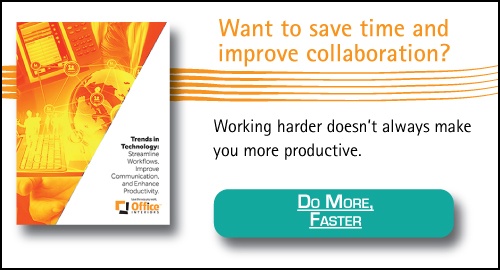Meetings are one of those necessities of office life that workers either love or hate. A meeting can be either an excellent opportunity to exchange ideas and collaborate or a poorly planned waste of time.
One study showed that in the U.S. alone, US $37 billion is wasted on unproductive meetings each year. With so much time and money on the line, it’s not surprising that many companies are using meeting room scheduling software to make the process more efficient.
What is Conference Room Scheduling Software?
In a nutshell, conference room scheduling software or room booking systems, are technology tools that automate the task of scheduling meeting spaces.
There are a variety of options to choose from, but they fall into two general categories: hardware-software solutions that include digital signage or software-only platforms. They integrate with your existing calendar and email applications to streamline the room booking process, making it easier and more efficient.
Many of the feature-rich applications allow workers to book meetings on the fly and update the status of conference rooms from their phones or tablets. This reduces the likelihood of double-bookings or ghost meetings where no one shows up, and space sits vacant.
Like other business process automation tools, room scheduling software streamlines the task by paring down the steps and digitizing them. Automating and centralizing the room booking process is one the easiest and most effective ways to boost meeting room productivity.
Coping with the Office Space Crunch
A few office trends have come together to put private meeting spaces at a premium. For one thing, the move to more open floor plans means there isn’t enough space for lots of meeting and conference rooms. On top of that, the increased focus on collaboration means people are meeting more often to get their projects done.
As a result, scheduling meetings has become a time-consuming and often frustrating process. Imagine struggling to find a meeting time to fit everyone’s schedule only to show up with your team and see that the room is already in use. That’s not only a massive waste of time; it’s a waste of money.
And double-booking is only one of the problems. Sometimes a meeting is unproductive because the space isn’t the right fit – the room is either too big or too small for the group or isn’t equipped with the technology tools attendees need to do their work.
Room scheduling software can overcome these challenges by ensuring meetings start and end on time and that the room fits the size and needs of the group. It also saves time on the scheduling side. One survey of 1,500 managers and administrative staff reported that workers spend up to 5 hours a week scheduling meetings using traditional methods like email and phone calls.
Assessing the ROI of Room Booking Software
While meeting room scheduling software provides fantastic benefits to all types of businesses, it’s particularly useful for collaborative workplaces where there are many unplanned or impromptu meetings. Employees can use the software to quickly check for the nearest available room and book it on the go from their smartphones or tablets.
If your goal is to get better visibility into meeting room costs, investing in a conference room scheduling tool is a wise decision. Many of the top booking systems provide detailed analytics that can give you valuable insight into how frequently your meeting spaces are being used, so you can make informed decisions about ways to use them more efficiently.
The data can also help you determine how much meetings are really costing your company. And it could be a lot. This Globe and Mail article estimates the average cost of a 12-person meeting is over $900. With a price tag like that, it doesn’t take long for meeting costs to add up.
Considering the Pros and Cons of Room Scheduling Software
As with any process automation, room scheduling software poses a few challenges; the first of which is often cost. To get the best results, you need to invest in a platform that offers robust capabilities and ease of use.
Another drawback can be a loss of flexibility. Automated processes are more streamlined, so they can quickly become too rigid. You can avoid this through smart planning upfront, knowing precisely what you need the software to do and talking to your provider about how to seamlessly fit the solution into your existing processes.
In the end, only you can decide if automating room scheduling is going to benefit your company. But if you do think it has value, here is a list of some of the leading room booking systems worth considering.
It’s understandable that you don’t want to jump on every technology bandwagon. Because yes, for every business challenge, “There’s an app for that.” But as you can see, there are some real benefits to using technology to make better use of your office space. It can help your company make more efficient use of its meeting spaces, and your employees can use the hours they save on booking meeting rooms to do more value-adding work like enhancing customer service and improving products.
Read about more of the latest technologies changing the way we work in our Trends in Technology Guide!
Cory Porteous
Director of Marketing & Inbound Business Development
Office Interiors




